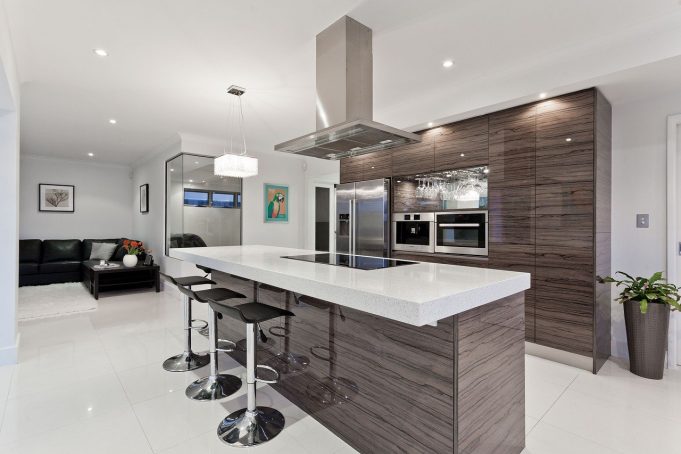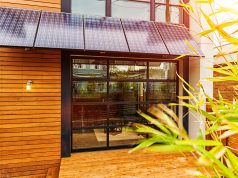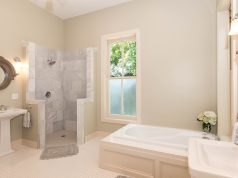At the heart of every home, there is a kitchen. If you are on your way to making your home more sustainable and eco-friendly, why not begin with the kitchen?
Along with a beautifully renovated kitchen, you will be doing something great for your family and the environment. The best part is, it doesn’t need to cost you an arm and a leg.
Here are some of the best tips for a sustainable kitchen renovation ideas.

Let there be (energy efficient) light
Switching your lighting to environmentally-friendly sources such as LED lights, which are 90% more efficient than other bulbs – both incandescent or fluorescent.
LED bulbs also tend to have a longer lifespan than the other types, meaning you will be saving electricity and waste too.
What to avoid
These are some things to avoid, for the sake of your environment and your family’s health and wellbeing.
- VOC paint
- Appliances that chew through energy
- Finishes on your floors
- Cleaning products containing toxic chemicals
- Glues with formaldehyde
- Materials which attract moisture and/or dust

Source eco-friendly materials
When investing in sustainable materials, be sure you are opting for robust, long-lasting items that will serve your home well into the future. Some of these are;
Bamboo
With veneer made from the mature stalks resulting in the most incredibly unique patterns, bamboo is such a beautiful choice for your new kitchen.
Not only beautiful, but incredibly eco-friendly too, bamboo is easily grown and is considered to be a rapid and renewable resource.
Neolith
Lightweight yet durable. And primarily comprised of raw, recycled materials such as crushed pieces of stone, Neolith is tough, resistant to heat and scratch proof. This makes it a great choice for benchtops.
Plywood
Plywood is a versatile material and can be a fantastic option when it comes to sustainable kitchen cabinets.
Cabinets made from plywood are comprised of thin sheets of wood, stacked and glued together. The ply or thickness is the wood is determined by how many sheets are layered together.
A quick note – Be sure to avoid plywood manufactured with glue containing formaldehyde, as this will negate your sustainability factor.
Recycled glass
Crushed up pieces of broken glass, with the help of some resin as a bonding agent, come together to form stunning recycled glass benchtops. When colourful pieces of glass are used, it can be like a beautiful kaleidoscope.
Solid timber
If you’re aiming to avoid materials made from harmful chemicals, such as plastics, you really couldn’t get much further away from them than solid timber.
A truly wonderful green and renewable resource, solid timber is of course from a natural source. They make for fantastic cabinets as they are durable, will last a very long time and they can easily be repainted and repaired – unlike other cabinets made from laminate or vinyl.
VOC-free paint
Paint that is free from VOC, or Volatile Organic Compounds, is integral to a sustainable kitchen.
You know when you get a whiff of that “new paint smell”? Well, that’s a key indicator of VOC, and those volatile gases contained in the paint can have a detrimental effect on your family’s health as well as the environment.
Reduce your water usage
You can save around 30-50% of your water consumption by installing a low-flow tap. You can also add on a low-flow aerator if you want to add some volume to the water-saving output.
A huge player in the water consumption within your home is your dishwasher. If you feel that you never really tend to run your dishwasher at full capacity, you may opt for a slimline dishwasher. It is, as the name suggests, slimmer (450mm wide, as opposed to the standard 600mm), and will use less water per cycle.
Other options are to purchase an energy-efficient dishwasher that doesn’t require as much water to function, or to always remember to run your dishwasher on its version of “eco mode”.
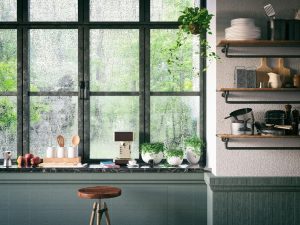
Reuse whenever, wherever you possibly can
There are so many ways you can be sustainable by reusing items you already have. It is often possible to breathe new life into old, run-down items in ways you perhaps wouldn’t consider at first.
Why not use a coat of (VOC -free) paint on your old cabinet and drawer handles, to freshen them up instead of buying new ones?
Or maybe instead of building or buying brand new kitchen cabinets, you can just give the cabinet doors and benchtops an eco-friendly upgrade.
Get the most efficient appliances
Appliances are such a key part of your kitchen, and can have a big impact on the energy-efficiency of your home.
Induction stovetops are far more conducive to sustainability than its gas or electric counterparts. Induction plates also heat water at a faster rate than gas or electricity, and overall you will save time, money and energy.
Aside from your bigger appliances in the kitchens, don’t forget about the little guys too – your benchtop accessories such as your kettle, toaster and microwave should be energy-efficient models too.
A food waste disposal system is a great feature for any sustainable kitchen. Installed in the kitchen sink, this unit will reduce the amount of food waste that ends up in your garbage bin. Instead, the food waste travels through your disposal unit and directly into the sewage system where it benefits the environment.
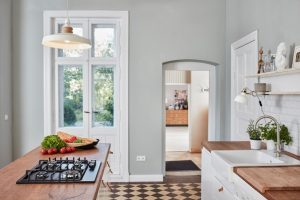
Don’t rush the planning process
A sustainable kitchen is a great project to undertake and it is worthy of a thoughtful and careful planning and design process.
As the kitchen is such a key room in any home, the last thing you need is to get a few months down the track and resent some of your choices.
Overall, the benefits of an eco-friendly kitchen are plentiful – increasing efficiency, lowering costs, generating less need for maintenance.
We all know going green is a hot topic at the moment, and words like eco-friendly and sustainability are thrown around constantly – but it’s far from a trend.
Sustainability is the way of the future, and what better place to start than in your kitchen.

